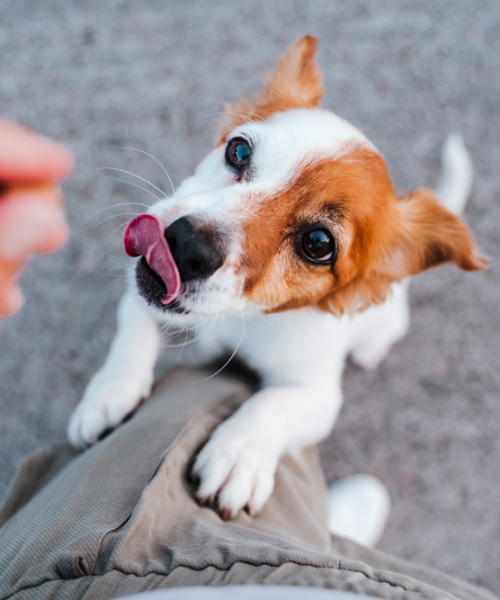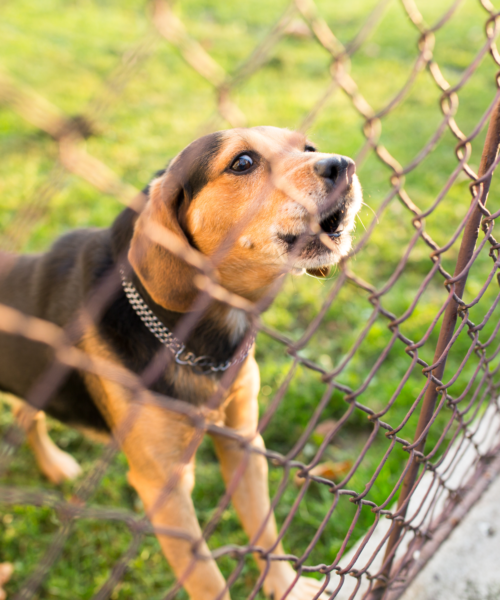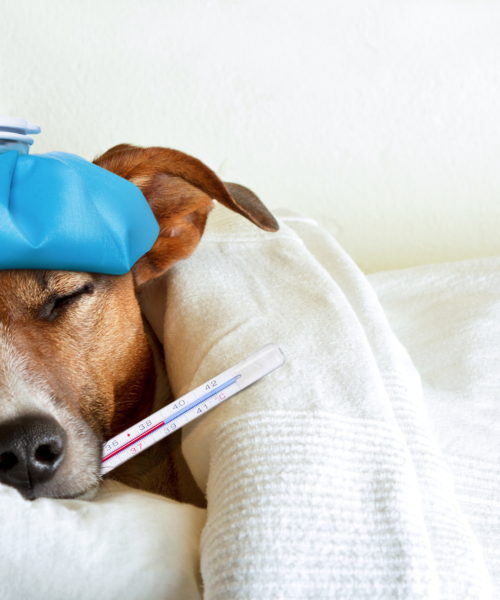Ellen Britt for CNT #wooftips
You can likely easily tell when a human is stressed out by the way they behave, but it’s not so easy to tell when your canine companion is suffering from anxiety or stress.
This is particularly true if you have just adopted the dog and you have not had a chance to get to know them and their usual behaviors very well.
Some dog behaviors are sure giveaways, but others are more subtle. Here are 15 ways your dog may be communicating with you that they are stressed. While these behaviors are seen in dogs who are stressed or anxious, they could also be evidence of an underlying medical problem, so if the behavior persists with no known cause, it’s time for a consultation with your vet.
Hiding
Most dogs are naturally social, so if he’s trying to hide or get away from a situation, you can be sure he’s stressed. Your dog may run to another room in your house, or try to crawl under a bed or another piece of furniture. In any case, this behavior deserves investigation.
Panting
Your dog will naturally pant if she’s too warm, as this is their way of dissipating excess body heat.. But if your dog displays excessive panting, even when environmental conditions don’t warrant it, then you can be sure your dog is upset about something.
Trembling
Of course, dogs will shiver, just like we do, if they are cold. But just like panting, if the temperature is not overly cold, shivering or trembling is a sure sign of stress or anxiety.
Drooling, excessive chewing or licking lips
These take some interpretation, as many dogs will like their lips as a sign of social submission. And drooling in anticipation of a treat is perfectly normal. But dogs who constantly lick their lips, drool when no food is in sight or display excessive chewing may well be exhibiting a response to stress.
Flattening ears
This one is a pretty obvious sign and ususally indicates stress. Your dog will flatten her ears, sometimes completely against her head or “pin” them back.
White eyes
Normally, when your dog looks straight at you, you don’t see the whites of his eyes at all. But when a dog moves his eyes to look around without moving his head, the whites of the eyes become quite visible. Under stress, you may notice the whites of your dog’s eyes are more visible. This is sometimes called moon eyes or whale eyes.
Scratching
Scratching of course, could easily be a sign of irritated skin or even a flea infestation. But it can also be present when your dog is anxious or under stress.
Tensing muscles
This can be really noticeable when taking your dog to the groomers or to the vet. Sometimes if your dog is really stressed, he can become so stiff that it makes grooming or even a thorough veterinary exam very difficult.
Agression
If your dog is stressed or uncomfortable, he may show signs of aggression, such as curling his lips, snarling, growling or even lunging at a person or object. This can happen if the dog is approached by a stranger or a child makes noise or quick movements around him. Needless to say, you need to be very aware of your dog’s emotional state if he is in such a situation, because if he feels threatened and acts on his emotions by biting someone, there could be a very unfortunate outcome for everyone.
Barking
Barking and even howling can be signs of stress and anxiety. This behavior is particularly common with dogs who display separation anxiety when they are apart from their owners.
Pooping or peeing in the house
Even the most well house broken adult dog can revert to puppy-like behavior when under stress. This behavior is particularly repulsive to owners and patience is required. This is another symptom that might be a sign of an underlying medical condition.
Destructive behavior
All dogs get into trouble once in awhile and chew something they are not supposed to have. Repeated destructive behavior, especially when it occurs when you are not at home, is a clear sign of distress or possibly boredom and can manifest itself in chewed up carpets, torn pillows and ripped up cushions. A daily exercise routine for your dog can go a long way to put a stop to this. Plus, exercise is good for your dog and you as well.
Pacing
Have you ever been so anxious about something that you just couldn’t sit still? You dog is the same way. If she’s upset, she will likely pace and prowl and just can’t lie down.
Hypervigilance
Dogs who are anxious or who are under stress are on hyper alert. They are tense, can’t sit still and look nervously about, jumping up at the slightest noise. This is exhausting for both dogs and their owners.
Tails Tell the Tale
Dogs use their tails to signal their emotional states. When a dog is relaxed and calm, the tail is loose, wagging and flops about. But under stress the tail tells the tale. When a dog’s tail is stiff and points upward, be aware that the dog could be showing aggression or even giving a warning to anyone who approaches him.
Dogs love a predictable routine, so if at all possible, keep to a regular feeding and exercise schedule. Speaking of exercise, it’s the one thing you can do to work off some of that nervous energy and keep your dog calm. Also, providing your dog with his own “calm space” within your household, such as a crate or bed in a quiet place, can go a long way to keep him happy and healthy, both physically and emotionally.
So there you have it. Dogs, just like humans, can suffer from stress and anxiety. But unlike humans, they can’t tell us in so many words what’s wrong. As responsible owners, it’s up to us to interpret our dogs’ body language to keep them safe, calm and out of trouble. And again, please remember that if you cannot clearly indentify the source of your dog’s behavior and it persists, please consult your veterinarian to rule out an underlying medical condition.
By Ellen Britt
Dr. Ellen Britt has loved dogs since she was a child. She is particularly fond of the Northern breeds, especially Alaskan Malamutes. Ellen worked as a PA in Emergency and Occupational Medicine for two decades and holds a doctorate (Ed.D.) in biology.


































